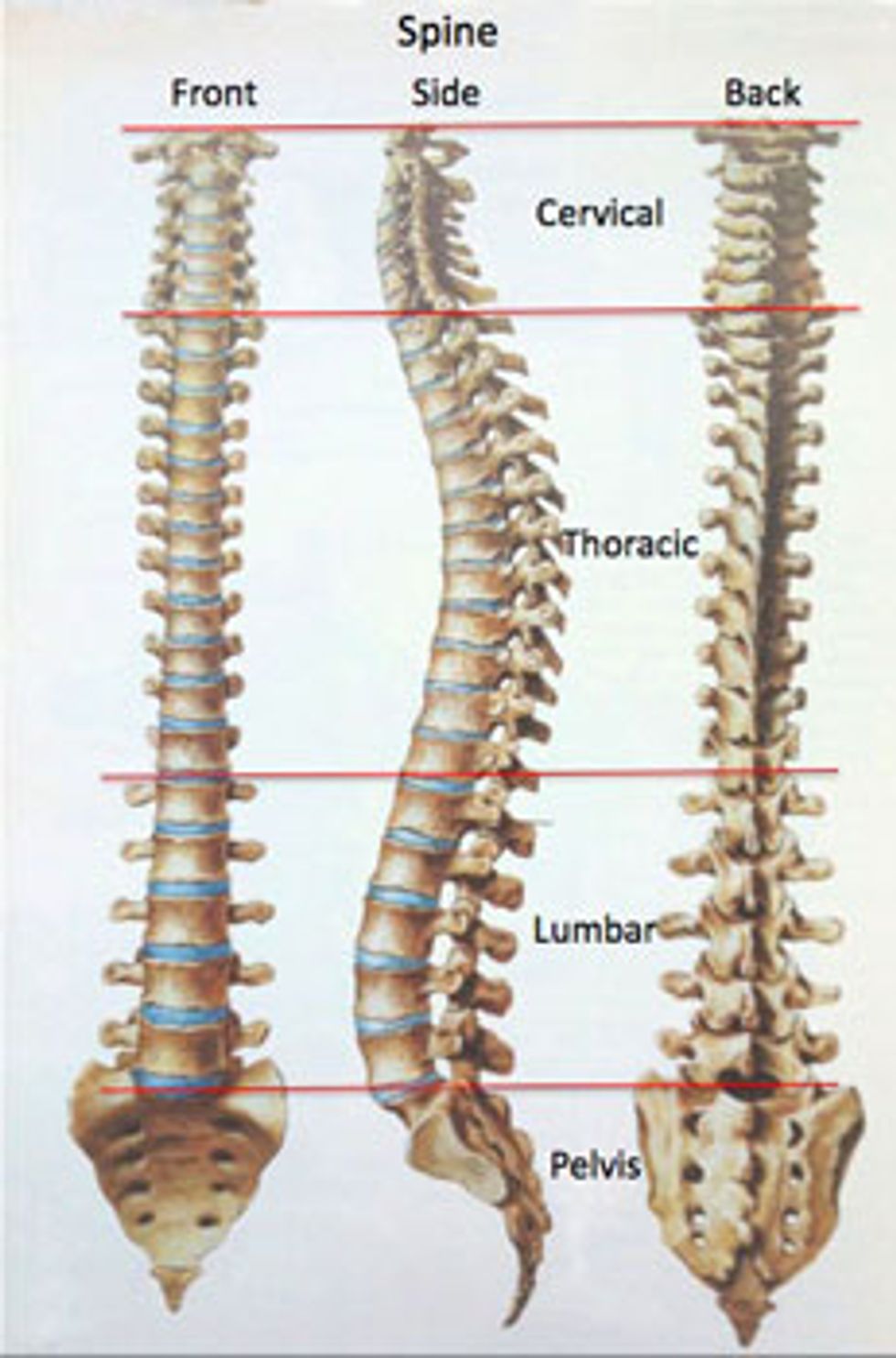Do You Have Lower Back Pain? Here's What Might Be Wrong
Have you got lumbago—with or without sciatica?? These are old-fashioned terms: lumbago simply means low back pain, and sciatica is pain that radiates down the leg sometimes with numbness, tingling, or weakness in the muscles. Let’s look at back pain in dancers.
This is the second of a two-part series on the spine. This first post dealt with the cervical spine, or neck; the thoracic spine or ribcage; and scoliosis. Part II discusses the lumbar spine or lower back, and the sacrum or the part of the pelvis that the spine rests upon.
The lumbar spine

This is where most of the problems occur. Normally the lumbar spine has five vertebrae between the ribcage and the pelvis. However, there are often congenital (present at birth) abnormalities in the region. One of the more common ones occurs when the lowermost vertebra, L5, is joined to the sacrum below, either on one side or both. Dancers with this problem complain of stiffness in their port de bras and arabesques because they are trying to do with four vertebrae what everyone else is doing with five!
There is an area of increased stress where the rigid thoracic spine joins the flexible lumbar spine, and a second area where the lumbar spine joins the rigid pelvis below. Both of these areas can have problems. A common strain occurs at the junction of the thoracic and lumbar segments in male dancers who do a lot of partnering. It is usually muscular and heals with therapy, but they need to back off for a while and let it heal. These dancers may need to work on their upper-body strength to help prevent this injury.
Between the Lumbar and the Sacrum
The majority of back problems come from the lowermost segment of the back—the Lumbosacral spine. This area is put under extreme stress when performing grand battements, port de bras, arabesques, and attitudes and is prone to muscle strains, disc disease and stress fractures.
Muscle pulls or strains are characterized by pain, spasm, and stiffness. The pains may radiate into the buttocks but not usually down the legs. They usually resolve with relative rest (don’t do what hurts), mild anti-inflammatories, and physical therapy. Rehab after the symptoms improve is important to prevent recurrences.
Vertebral Discs
The discs that lie between the vertebrae are somewhat like a doughnut in that they have a firm outer ring but a soft center. Under extreme pressure, the ring can rupture and allow the center to protrude, like a slash in a tire that allows the inner tube to poke out. Unfortunately, the place where this occurs is exactly where the nerve root is trying to exit through its foramen. Nerves are very sensitive to pressure so they become swollen and irritated. The pain in the irritated nerve radiates down the course of the sciatic nerve from the buttock to the leg and foot, causing the characteristic tingling, numbness, and weakness associated with the “herniated disc.” These symptoms can range from mild to severe. The vast majority of the mild and moderate cases will heal with conservative therapy, especially in young, healthy dancers. Severe cases with marked weakness of the leg or those that don’t heal may require surgery, which usually allows the dancer to return to their career.
Stress Fractures
Stress fractures in the lumbar spine are common in dancers and gymnasts. They have a characteristic presentation: unilateral (on one side), low back pain that keeps coming back or won’t go away. Pain with the arabesque, attitude, or grand battement on the affected side is a stress fracture till proven otherwise! These have a fancy name: spondylolysis, or a breaking down of the spine. The diagnosis is usually made on an X-ray, an MRI, or a bone scan. Treatment is complicated and depends upon the stage of the fracture; whether it is fresh or old, i.e. whether it has the potential to heal with immobilization (a brace) or whether it is un-healed (a fibrous union) in which case it is managed by physical therapy and rehabilitation. These fractures are relatively common in dancers and, if managed correctly, usually don’t interfere with a career in dancing.¨
MERDE!




